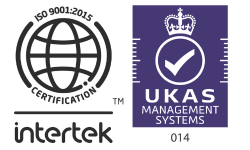Sometimes employee absenteeism cannot be avoided and people need to take some last-minute time off. However, when employees continuously don’t show up to work, turn up late or leave early it can start to have huge effects on your business. As a result, it’s important to have clear workplace policies and tracking procedures that allow you to keep on top of whether staff are absent often. This can also help you find simple and effective solutions that prevent these issues from arising in the future.
So how can you calculate and track absenteeism in your workplace?
What is employee absenteeism?
This is when an employee consistently doesn’t appear to work when they’re scheduled to and tends to apply when staff are missing work when it’s unplanned or not approved by the employer. This has a direct impact on other people in the business, causing stress and issues with work load.
The main causes of absenteeism
Some causes of absenteeism can and can’t be prevented. Examples of this include:
Minor illness
The average rate of absenteeism due to illness in the UK is 4.4 days per year, per employee. While you won’t always know when or if you’re going to be sick, informing your employer as soon as possible can help them manage your absence a lot more easily.
Workplace bullying or harassment
Workplace bullying and harassment is a huge issue in the UK and a survey in 2020 shows that 23% of workers have faced bullying at work and 25% have felt left out.
Bullying and harassment can include leaving people out of training or promotion opportunities, spreading rumours or undermining someone.
Mental health issues
In the UK, employee stress has caused over 11 million work days a year to be lost. This can be due to:
● Burnout
● Family issues
● Financial issues
● Personal issues
● Anxiety
● Depression
Major illnesses and long-term conditions
Major illnesses usually require an extended period of time off work with a gradual return to work programme planned to help ease them back in. As an employer, you may also need to be flexible with staff’s working hours if they need to visit appointments during work hours.
Family issues
Sometimes it can be difficult to leave family issues at home, meaning it can cause absenteeism within a company. Family issues could include:
● Divorce
● Unwell children
● A lack of childcare
Approved leave
Approved leave is planned time off that you’ve agreed with the employer. This is often easy to manage as it tends to be planned in advance and can include things like:
● Bereavement leave
● Paternity and maternity leave
● Holiday leave
Commuting problems
We all know that commuting doesn’t always go to plan, especially with traffic and train strikes affecting how long your journey takes. This can accumulate over time and cause a lot of working days to be missed.
Team and Management issues
When there are issues within a team, it can lead to staff skipping work days or phoning in sick when they’re not. To avoid absenteeism it’s important to ensure teams are working well together and positive relationships are being built.
How to calculate absentee rates?
Calculating absentee rates, involves taking a member of staff’s unapproved absences during a period of time and dividing it by the total period of time, then multiplying it by 100 to get a percentage.
For example, if Anna has three unapproved days over the course of a month (25 working days) you will work out her rate like this:
3 absences within 25 working days
3/25 = 0.12
0.12 x 100 = 12% absentee rate
Ways to track employee absences
Use a centralised phone number or voicemail
Using one place for staff to call in sick or report that they’re going to be absent, will remove the need to bombard multiple teams to see whether their staff have been absent and how often. However, this can be quite time-consuming, especially if you have a large company, as someone will still need to go through all of the calls to understand who has been out of work and for how long.
Due to the time it takes to collect and relay this information, this can be quite costly for businesses.
Personal texts or messaging apps
Using a messaging app like Whatsapp is an easy way for staff to communicate that they can’t come into work. However, not all employees will want to download the app, or may not even have a phone so this may not be the easiest way to track absences.
Use a time-tracking software
Time-tracking software is simple to use, can prevent time fraud and makes it really easy to track how often people are taking time off work. It also allows staff to track their own time, including their holiday and sick days.
Here at Payescape, our time and attendance software reduces admin, improves data and security, reports data accurately and even helps you stay compliant with the latest rules and regulations.
Creating an absenteeism policy
Creating an absenteeism policy can help you ensure all time tracking is accurate and reduce the chances of people taking unapproved leave. So here are 6 things you should include in your policy:
● Explain how staff should report absences, including when to report it and who they should report it to
● State how absences are tracked, for example through time tracking software
● Outline and communicate how your sick note policy works
● Explain how salaries or wages are affected by absent days
● State what disciplinary actions take place if unapproved absences take place
If you’re looking to track your employee absences with reliable time-tracking software, get in touch with Payescape today!














